What you need to read before you buy an iPhone
WhatPhone’s September 2017 survey
- WhatPhone conducted an online survey, relating to people’s data usage in mobile phone plans in late August 2017.
- The survey was answered by 500 Australians.
- Results were blogged about on WhatPhone in September.
- The goal of the survey was to assist visitors to the site with information related to common questions we receive about data products in phone plans.
Key findings :
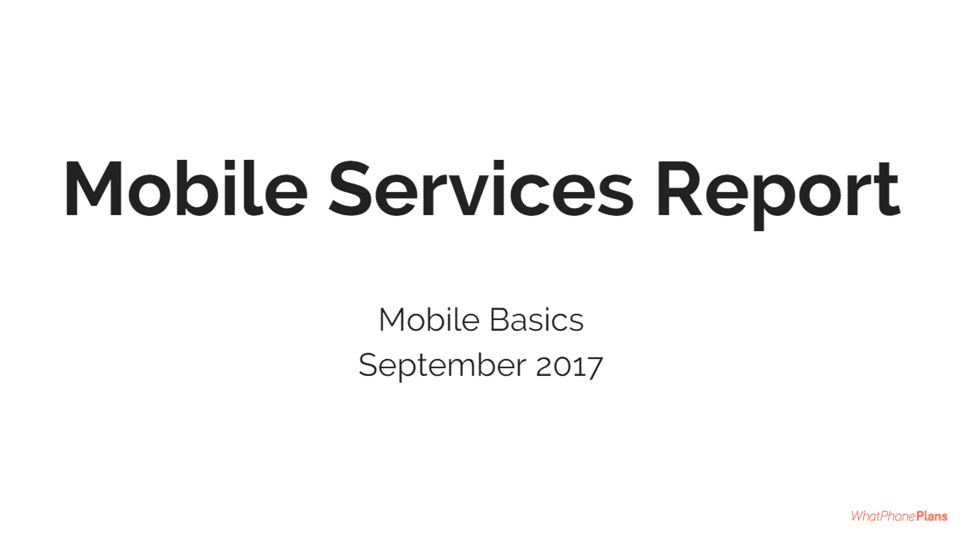
In general, the survey paints a lackluster picture of Australian sentiments on the phone company services they buy with some common misconceptions, especially about data, the most likely cause of consternation.
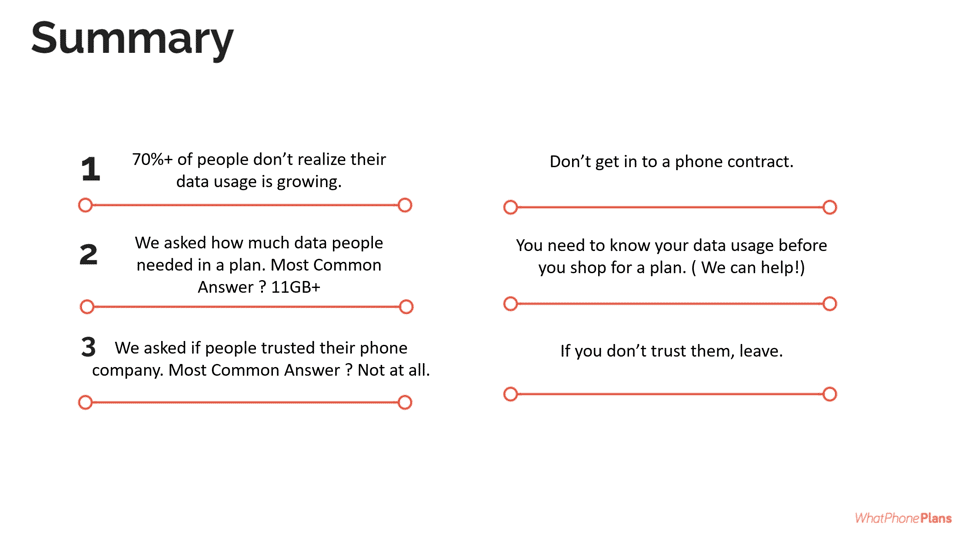
- Around 50% of Australians don’t understand they are using more data every year:
The ACCC, Cisco, and others suggest that your data usage is likely to increase by around 70% in the next year.
The key fact that will help you:
Our advice is to stay on month to month phone plans and avoid phone contracts. You’ll get a lot more data for your money. - The data bundle sizes people use are much bigger than they used to be : The most common answer in our survey, for the size of data bundle that users required was ‘11GB or more per month.’
The key fact that will help you :
Make sure you know both your data usage and the trend it is following before you invest in a plan. Then check in on your plan inclusions from time to time to make sure you’re still getting the best value. - Nearly 30% of people have been charged $10 or more for extra data in their plan : Being charged $10 for extra data is the first indicator that you could be on the wrong plan.
The key fact that will help you:
Again, choose a SIM Only or Prepaid plan to avoid low data allocations.
It’s not hard to see how these results are related. The findings reveal some critical misunderstandings about data in phone plans. We offer some advice, below.
Around 50% of Australians don’t understand they are using more data every year
Only 30% of people correctly identified that they would use more data this year than last.
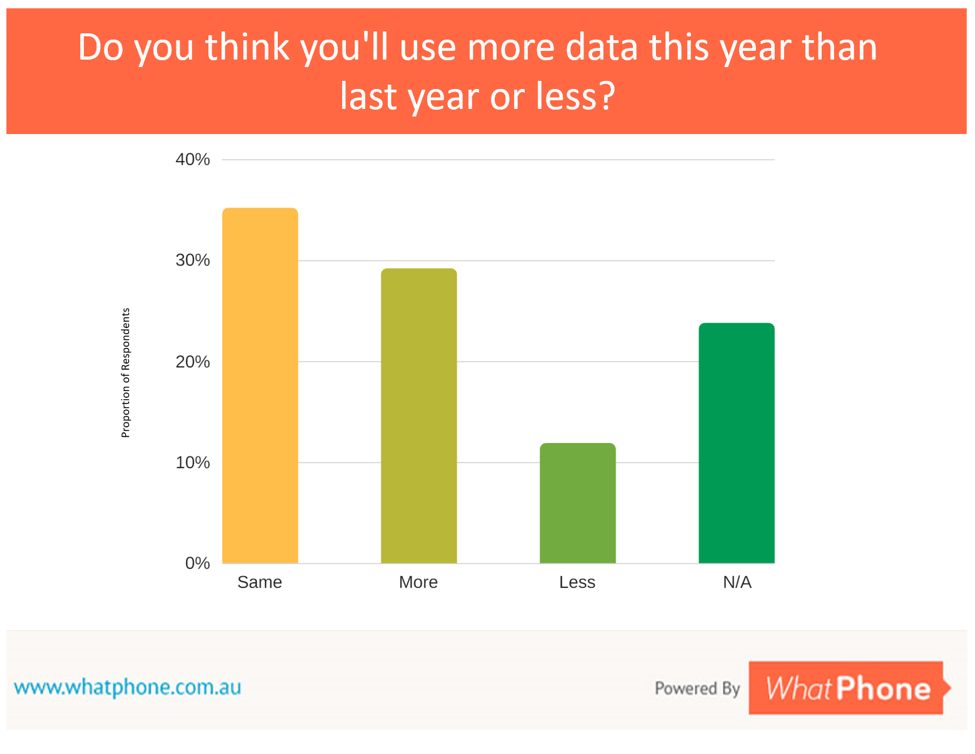
Why is this important? :
In our view, the most critical insight required, in buying a mobile phone plan, is that people’s data usage is increasing by between 70% and 100% per year. This should affect the phone plan you buy (we recommend prepaid or SIM Only plans, see below for why.)
The key fact that will help you :
We suggest you do not sign up to a phone contract. On SIM Only and prepaid plans, as your data usage rises, you’ll be given more . Under a phone contract, that doesn’t happen.
Remember :
- Your data usage rises between 70% and 100% each year.
Here is what is really happening to the amount of data people use each month in their phone plan.
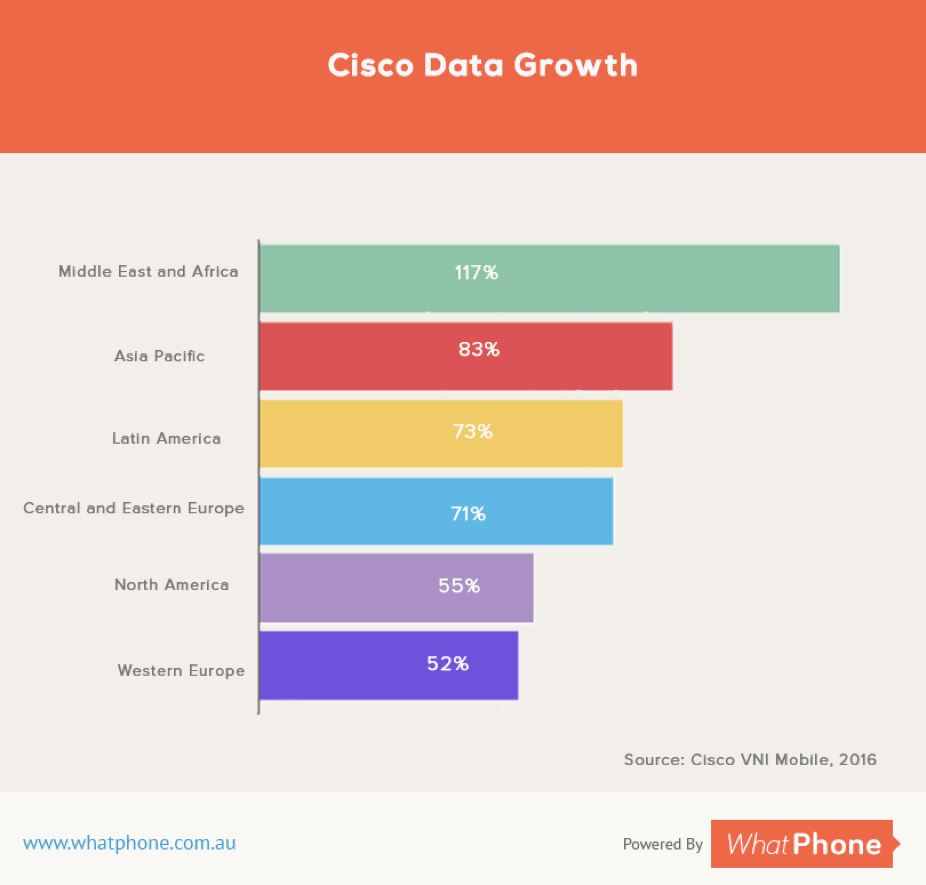
- Compare your options :
Consider our infographic, below. In this example, Matt buys a phone under contract with a 2GB data allowance. When he does that, everything is fine. Then, over the 2 year term of his agreement, his data usage rises by 70-80% per year. By the end of the second year, he’s spending a lot of extra month funding his ‘additional’ data requirements.
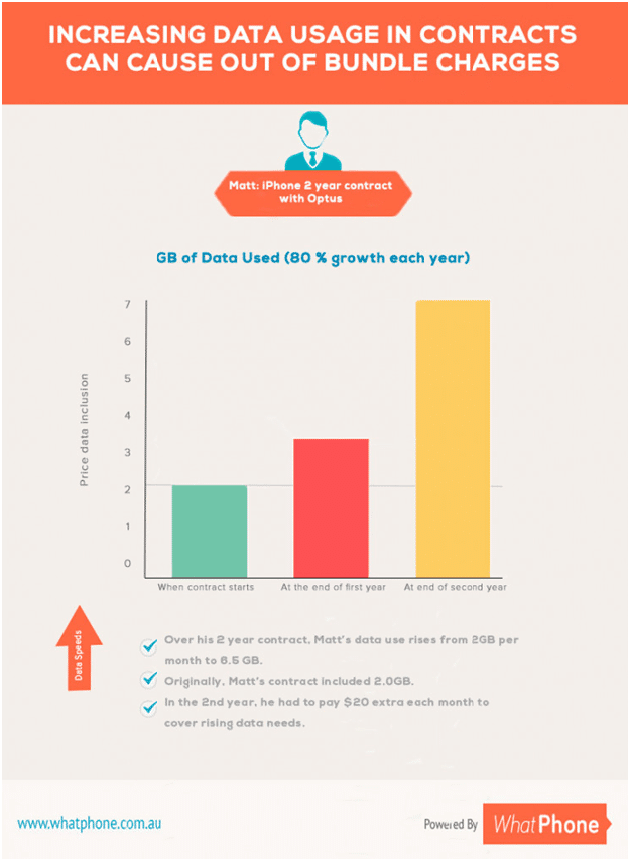
The average data bundle size people use, are much bigger than they used to be. Most common answer ? 11GB or more per month.
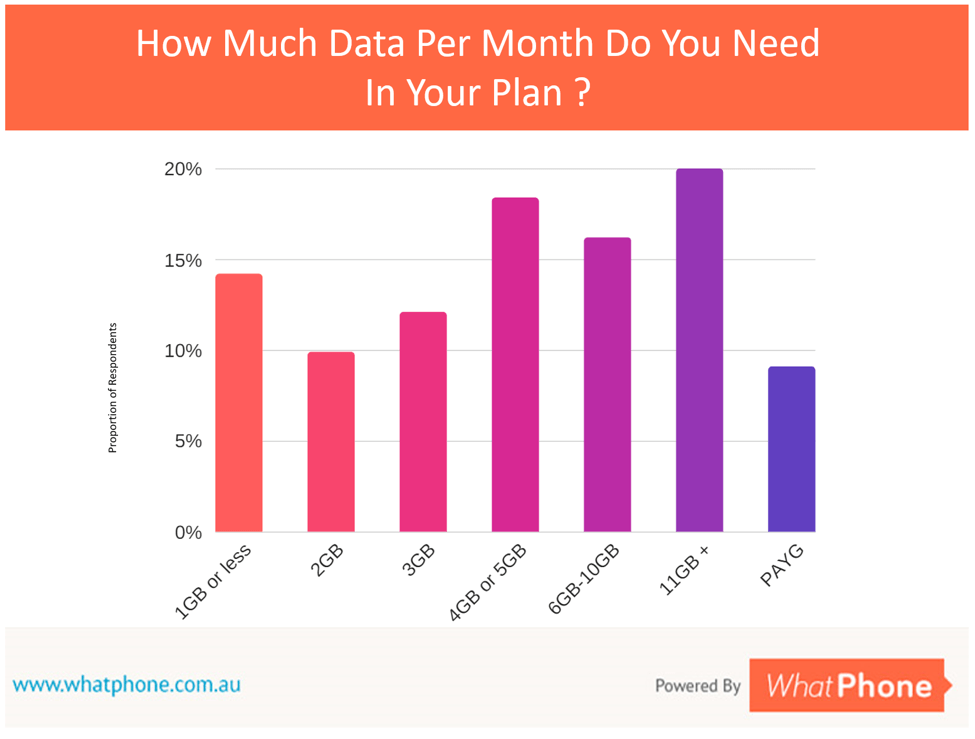
The question we asked here was how much data do you need in your phone plan. You can see yourself, from the chart that respondents had a pretty even split of their data requirements, covering every allocation we offered including PAYG.
We also asked users how much data they have in their phone plan. ( Graph not shown. ) The answers were remarkably similar to the chart above. One indication we can take from these facts then is that there is a broad split of usage information available and people generally have what they need.
- The most common answer people gave was 11GB or more:
11GB is a huge data allocation to get through in a month. Especially with zero-rated data being increasingly common in phone plans from the major telcos and ‘free’ entertainment running alongside it. - This is unusually high:
Our analysis shows that while the average size of a data plan users chose on our site has been rising each month for the last 2 years, it’s still ‘only’ around 5GB per month. That suggests that there may be some misunderstanding among the people we survey about either how much data they use or have, in the survey we ran.
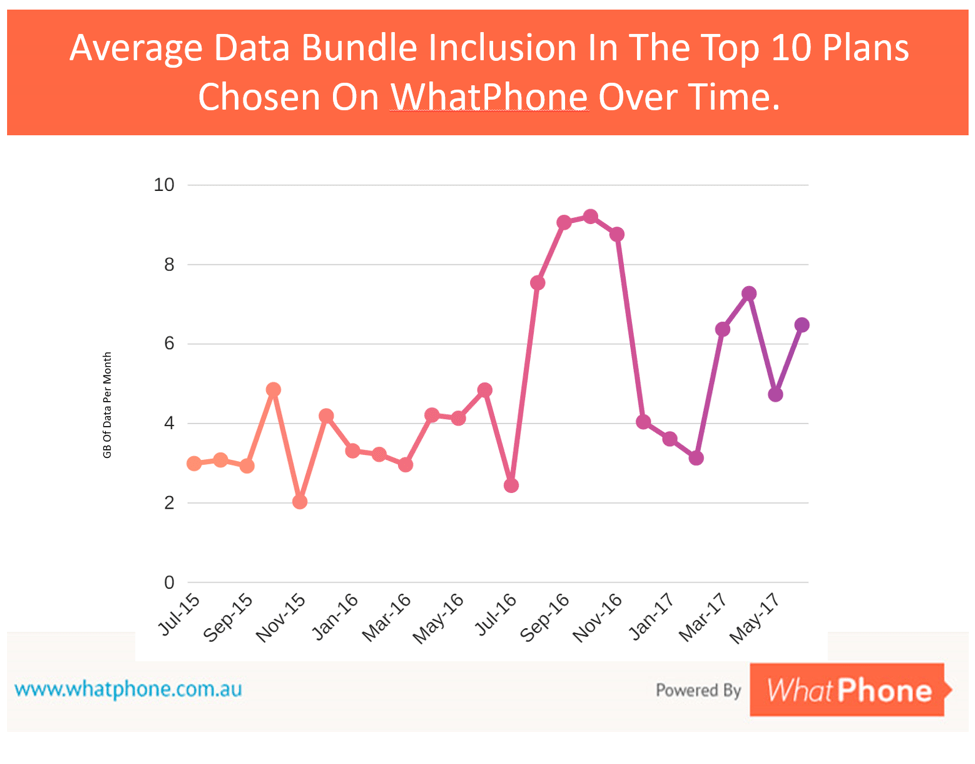
- They could be buying more than they need:
The most likely reason people would claim so much data in their plans is that they are buying more than they need in their monthly plan. Previous reports have suggested that, if in doubt, users pick plans with far more data than they need, in order to avoid the risk of going over their plan allocation and being charged more. I have personally spoken to people who take that approach.
The key fact that will help you:
The critical insight here is to check your data usage before you buy. Then select the right phone plan. You should also bear in mind trends in your usage (see below.)
We explain how users can check how much data they are using on both Android devices and iPhones in our article ‘How Much Data Do I Need?’.
28% of people were charged $10 or more for extra data in the previous month.
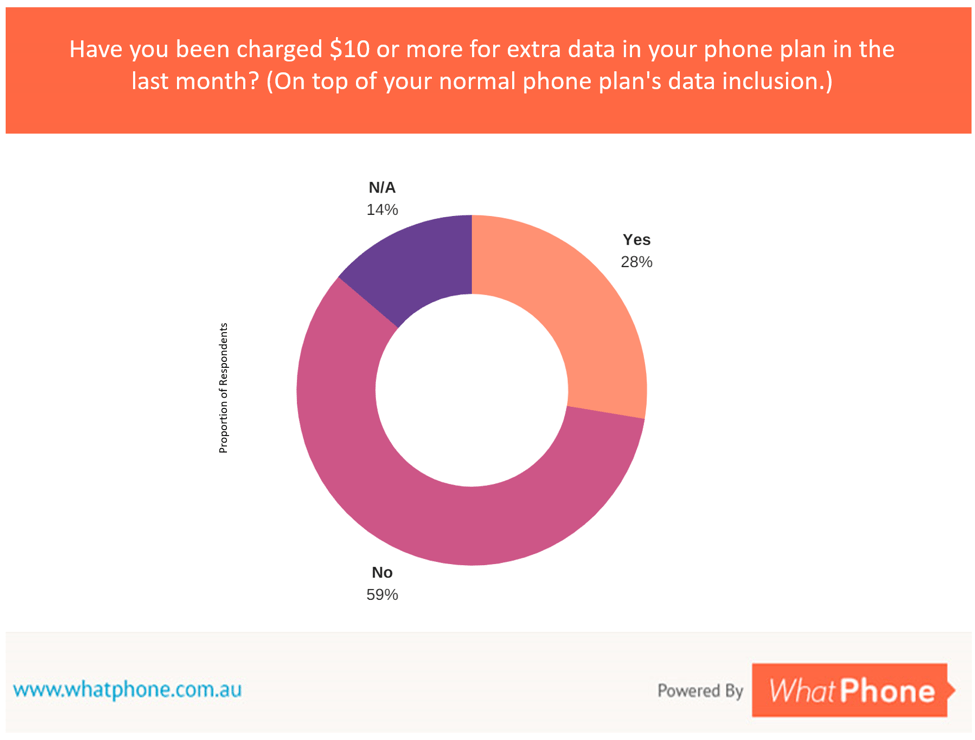
Many phone users have either a postpaid contract or postpaid SIM Only plan. With these plans, they will be allocated some data, for example, 8GB to use in a calendar month. In the event that they use more than the 8GB, the most common charging methodology is an automatic charge of $10 for an additional GB of data.
The $10 scheme is a vast improvement on the previous ‘equivalent’ under which charging was done on a per MB rate which could cost users hundreds of dollars which often led lead to bill shock. It’s not perfect, however. The additional GB can be charged, for example, on the last day of the month, giving people only 24 hours to use the extra data they have paid for. Equally, the $10 charge can be applied multiple times in a month for a user who is on a plan which seriously under-estimates their usage.
The key facts that will help you :
- If you received a charge for $10, to cover extra data you needed, it’s a warning:
This sort of charge is the first notification you will receive that you are on the wrong data plan. Check your plan’s data entitlement (it will be shown clearly on your bill and in the self-service app of your phone company) and the amount of data you are using. If you need to, contact your phone company and arrange to move ‘up’ a plan. You’ll get more for your money that way. - Stay on a month to month agreements:
Data pricing gets cheaper every year. If you stay on a month to month agreement, the phone companies will give you more data each year. This is just one example, of one phone company at one price point. The others all follow the same trend.

Summing up the survey results into mobile data usage
Linking the results from the three questions we asked in this survey then, it seems there are some threads we can tie together. Australians are choosing plans with more data in them than ever before, often, potentially to avoid unnecessary and punitive data charges. Unfortunately, some are still on the receiving end of those punitive data charges. 30% of people have been charged $10 or more for using data not included in their plan, in the last month. That’s a warning sign then need to move to a new plan.
It appears that some fundamental misunderstandings which in place about the amount of data people are using and how that usage is trending, are the cause of this.
- People don’t realize that their data usage is increasing all the time.
- For some, those ‘trapped’ in contracts, that’s bad news. They are destined to pay the extra $10 per GB for data that is associated with their contract. The alternative is to take a SIM Only or prepaid plans, however, there are. We advise contacting your phone company to move up a plan or shopping around and finding a better deal. There are plenty available.
Other elements of our September 2017 survey :
- Considering buying an iPhone this year?
We have interpreted all the latest research in our advice on 2017 iPhones. - Understanding mobile phone basics :
We cover the (low) levels of trust Australians have in their phone companies, the low levels of awareness that exist around the options people have when it comes to the phone company plans available to them and the relatively high number of people on very old phone plans in our article on mobile phone basics. - Mobile Broadband Trends :
And we cover mobile broadband trends, including the biggest trend of 2017 : Mobile broadband as a replacement for fixed.
Sources :
- The ACMA also highlighted a roughly 70% growth in mobile data in their 2015/2016 report, shown here. Data usage has grown visibly in just the 18 months since it was published: https://www.acma.gov.au/~/media/Research%20and%20Analysis/Report/pdf/ACMA%20Communications%20report%202015-16%20pdf.pdf